The transport sector is a major GHG emitter, accounting for about a third of EU emission, and will receive a renewed regulatory focus from the European Commission in the coming months. Originally addressed in the EU Green Deal, with aims to directly fund charging stations for electric vehicles, transport is now likely to fall under the recently-announced EU Recovery plan “Next Generation EU”, endowed with significant funds to kickstart our economy and a green approach to be inline with the climate emergency.
Currently, zero-emission solutions for transport do exist and have proven their efficiency. Car manufacturers have also started to bet on e-mobility and the upwards revision of 2030 GHG targets will further drive the uptake of clean mobility. With the EU Recovery plan and its financial strength, major parts of the transport sector are ripe for a mass shift towards e-mobility.
This will have a tremendously positive impact on GHG emissions and foster EU value chains. Besides, it comes with great potential for net job creation. Indeed, 200.000 net jobs could be created only for passenger cars (i.e. excluding buses and freight) in the EU by 2030, and even more once the target is raised. And over half these jobs are in installation and maintenance, which are inherently local.
However, much needs to be done to provide for a fertile ground and a consumer-friendly transition to e-mobility. EuropeOn, representing electrical contractors, responsible for electric works, among which the installation of charging infrastructure for electro-mobility, has formulated a series of recommendations to guide the deployment of this electric infrastructure.
Tap into the job potential behind transport electrification. To ensure our human capital is equipped to follow and address the rising demand for EVs, adequate skills and workforce provisions are needed. A sound regulatory framework will foster the predictably EU businesses need to invest heavily in this market, and should feature a workforce dimension with up- and re-skilling strategies.
80% to 95% of charging takes place in buildings. However, there can be significant hurdles for potential EV users who want to be able to charge their car at home. The Energy Performance of Buildings Directive took a first step in the right direction facilitating the installation of EV chargers, but the “right to plug” needs to be bolstered. Approval procedures should be streamlined, buildings must enable smart charging and funding is needed for building upgrades where existing electricity systems are too old to accommodate EV charging or where gird upgrades are necessary. In this regard, the upcoming Renovation Wave should not miss this opportunity to address charging in buildings.
Future-proofing the EV market, understood in a wider perspective including flexibility and energy services, means addressing the data and standards of EVs and charging stations. The data of EV should be made available to relevant actors to open a competitive energy services market, empowering the user to share his/her vehicle data based on the best market opportunities. Charging stations need to come with open standards and open communication protocols in order to avoid vendor lock-in for networked charging points with load-sharing capabilities.
Finally, fair competition and a level playing field need to be fostered with regard to the charge point installation market. Ensuring major players do not abuse their dominant position will maintain a competitive market with a higher consumer benefits. The latter also needs more dynamic network tariffs, sending the right price signals to electricity consumers. Further, approval procedures will benefit from a better communications framework between installers and grid operators.
To read EuropeOn’s recommendations, click HERE
